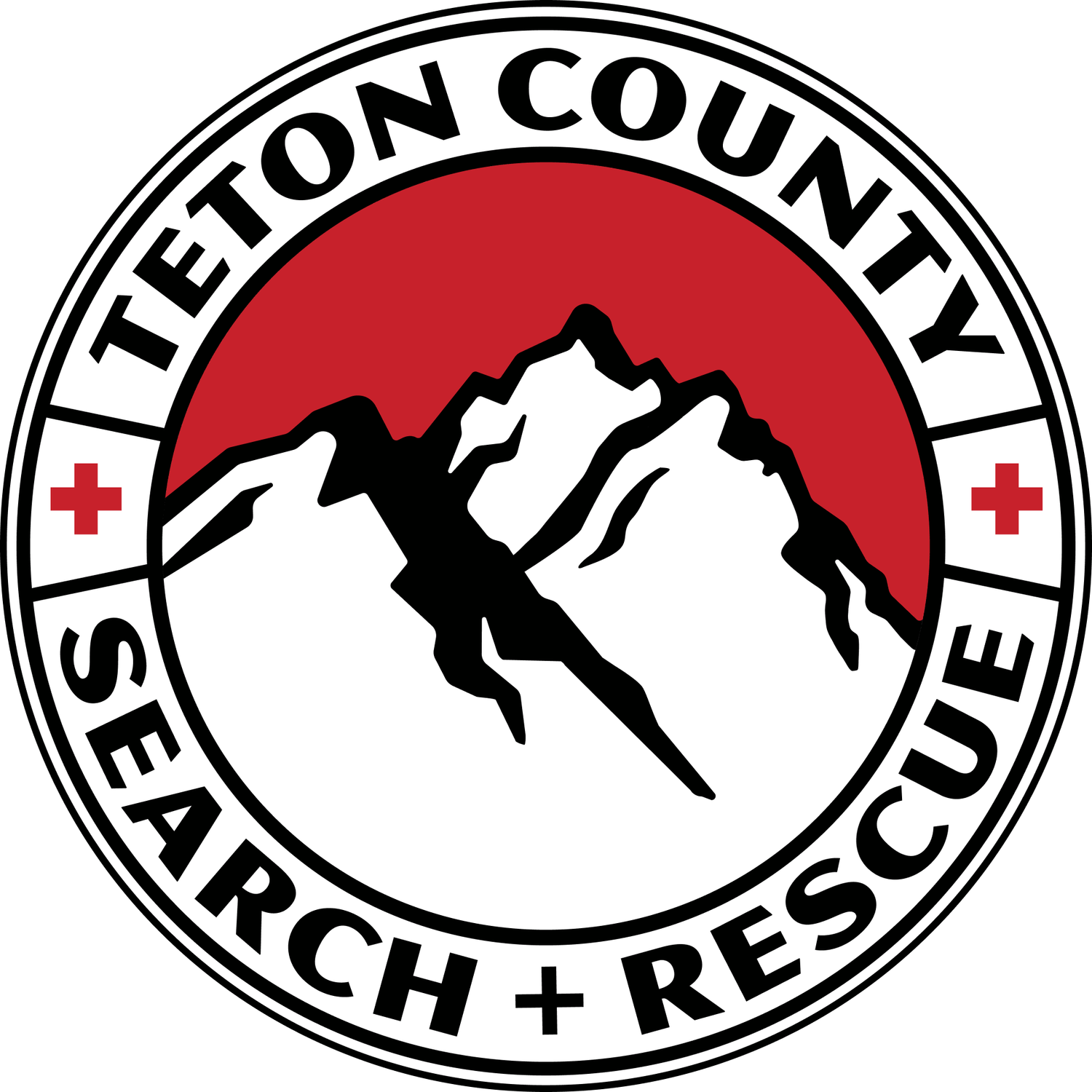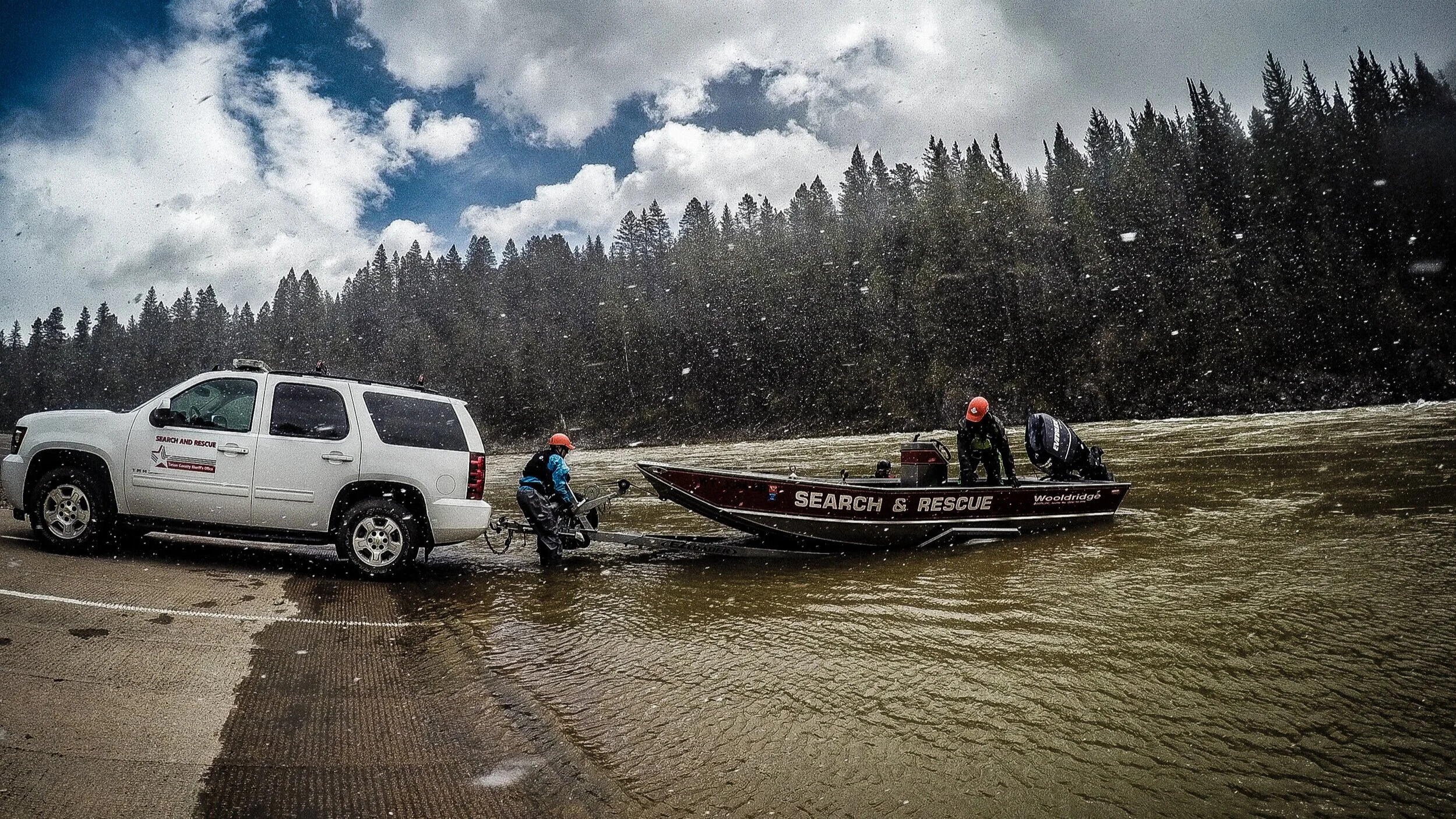Jackson, Wyo. — Teton County Search & Rescue utilized its helicopter to perform back-to-back rescues on Saturday, March 18.
In the first, a witness called 911 at roughly 1:30 p.m. Saturday after watching a skier fall about 700 feet down Central Couloir on Cody Peak. Central is a highly visible and extremely steep, technical ski descent in the backcountry south of Jackson Hole Mountain Resort. In order to access it, one must exit the resort gates, climb the ridge of Cody Peak before dropping into the couloir from the summit.
A skier carefully descends Central Couloir in the JHMR backcountry after his partner fell, requiring a TCSAR rescue. Photo: TCSAR
Ski patrollers and TCSAR volunteers help carry a patient to the rescue ship in Cody Bowl on March 18. Photo: TCSAR
The skier, a woman from Salt Lake City, lost her balance about halfway down the couloir. She tumbled down the couloir and over a cliff band at the bottom, sustaining multiple injuries. Her partner, a man from Victor, Idaho, was still up in the couloir.
JHMR ski patrol were first on scene while TCSAR mobilized a response with a team in the helicopter. The helicopter was able to land in Cody Bowl, where ski patrollers and SAR members helped load the patient inside the ship. Then, she was flown to a landing zone (LZ) and waiting ambulance at the base of Teton Village.
The woman’s partner was able to collect her skis still in the couloir. He pitched them over the cliff at the bottom before he jumped the mandatory exit cliffs to the field of snow below. He was able to ski out of the backcountry on his own power.
TCSAR is grateful for the partnership with JHMR Ski Patrol for the seamless response to help this skier get the help she needed.
The Teton Village landing zone and coordinated partnerships help TCSAR successfuly close rescue calls. Photo: TCSAR
Just after 3 p.m. on Saturday, TCSAR was contacted by Bonneville County Idaho SAR for a helicopter assist of a missing snowmobiler in the Palisades area of the Snake River Mountains. A 50-year-old man had gone missing after riding his snowmobile up Pole Canyon, outside of Victor, Idaho, on Friday and had not been seen or heard from since. Teton County Idaho SAR was involved in the hours-long search on snowmobiles. Air Idaho, a private helicopter ambulance, joined the search from the air.
TCSAR’s heli team searched for more than two hours from the air. The team eventually spotted the man; he was alive but stuck in extreme terrain. The heli landed and volunteers were able to reach him and help him board the ship for a flight out of the backcountry. TCSAR’s heli team was able to get back to the hangar in Jackson at 7:15 p.m., about 20 minutes before sunset.
TCSAR appreciates the coordination from the different SAR teams and agencies involved to help find this missing snowmobiler and get him back to safety. These incidents underscore the importance of having a life-saving rescue helicopter available at a moment’s notice. TCSAR currently leases its ship for eight months per year. Given the increased rate of rescues, the team is presently trying to raise enough money to purchase a year-round SAR helicopter for Teton County. Learn more about this effort here.







